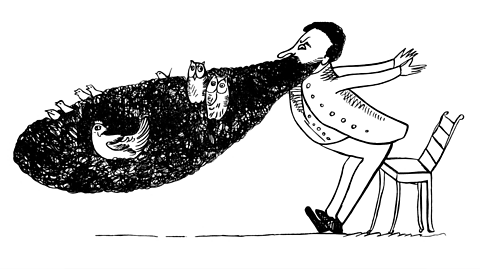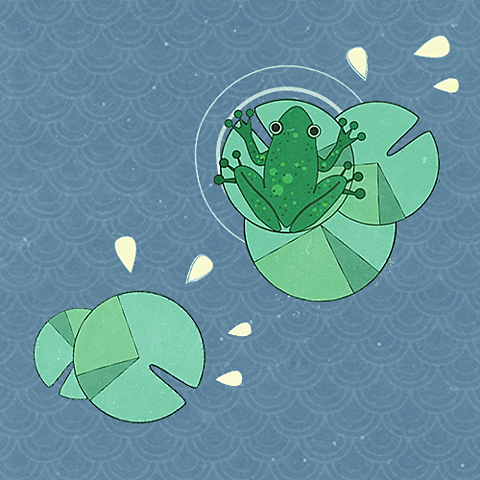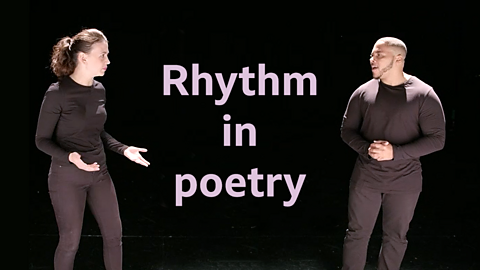There once was a student on Bitesize
Who wanted a poem the right size.
It canтt be too long,
Because that would be wrong,
So they learnt about short form on Bitesize!
Introduction to haiku and limericks
Shorter forms of poetry like limericks and haiku are not only fun to write, but they also have a long history.
Key learning points
- The history of haiku and limericks
- Rhyme scheme of limericks
- Rhythm of limericks
- Syllables in haiku
Short form poetry
Short form poetry is the name used for poetry which is very short.
Short form poetry has lots of benefits:
- short poems are easy to remember and to reciteTo read out loud.
- they get straight to the point of the topic
- they allow a precise word choice
- short form poetry is quick and easy to write
- different forms have clear and simple rules
When poets donтt have many words, they have to think carefully about their choice of language, so they can convey their meaning really precisely.
This makes short form poetry really interesting to read, as you can think carefully about the reasons behind the poetтs choice of words.
This also makes it fun to write short form poetry, as you can use some thoughtful vocabulary to express exactly what you mean.

Which of these is not a benefit of short form poetry?
A. You can get straight to the point
B. You can choose words very precisely
C. You donтt have to worry about spelling and punctuation
D. There are lots of different forms with clear rules
Answer: It is not a benefit of short form poetry that C. You donтt have to worry about spelling and punctuation. You always need to think about spelling and punctuation.
Conventions of limericks
Limericks are a popular and fun short form with just one stanzaStanzas separate poems into groups of lines. of five lines. Like most short form poetry, there are rules they should follow.
- Limericks use an AABBA rhyme scheme:
- The first, second and fifth lines should rhyme with each other
- The third and fourth lines should rhyme with each other
- Limericks have a regular rhythmRhythm can be described as the beat and pace of a poem. Rhythm is created by the pattern of stressed and unstressed syllables in a line or verse.:
- Lines one, two and five should be longer than lines three and four
- Lines one, two and five should have three sets of тdah dah DUMт rhythms
- Lines three and four should have two sets of this тdah dah DUMт rhythms
Video about limericks
Video about limericks, their form, conventions and history
There was an Old Man with a beard,
Who said, тIt is just as I feared!т
Two Owls and a Hen, four Larks and a Wren,
Have all built their nests in my beard!т
There once was a man called Ed Lear,
Who rhymed the way fans held so dear.
тTwas eighteen forty six, When his first limericks
Brought giggles, and laughter and cheer.
All limericks must have five lines
And AABBA they rhyme
Plus a regular beat
Of rhythmical feet
Which means: copy the rhythm like mine:
So, one last time т this is the rhythm ALL limericks follow:
dah DUM dah dah DUM dah dah DUM
dah DUM dah dah DUM dah dah DUM
dah dah DUM dah dah DUM
dah dah DUM dah dah DUM
And now, see, my limerickтs done!
Ta-dah!
History of the limerick
Limericks were first written in the 18th century in England. There is a town called Limerick in Ireland, but thereтs no evidence to suggest limerick poetry comes from Limerick.
The most famous poet to write limericks was Edward Lear in the 19th century. He wrote lots of funny limericks in a collection called A Book of Nonsense. Watch the film again to hear an example of a famous limerick by Lear:
There was an Old Man with a beard,
Who said, тIt is just as I feared!т
Two Owls and a Hen, four Larks and a Wren,
Have all built their nests in my beardт.
Edward Lear was an artist as well as a poet, and he also illustrated his own poems.

Complete the limerick below
Conventions of the haiku
Haiku is another popular type of short form poetry, which comes from Japan. Like a limerick, a Haiku also follows strict rules:
- A haiku is three lines long.
- There are five syllables in the first line
- Seven syllables in the second line
- And five syllables in the third line
- There is no rhyme scheme in haiku.
- Traditionally, haiku are about nature, and often refer to a season.
Usually, the poem has a moment of change - it may focus first on one thing, then on another, something may happen or suddenly be understood.
Here is an example of a haiku by Lewis Grandison Alexander about rain:
Listen to the rain
Falling broken on the ground:
Pity the sky once.
Video about haiku
A video about the conventions and history of haiku
A haiku is a traditional form for poetry from Japan. Often about nature, following a strict structure of syllables per line.
One famous haiku is by BashХ. Here it is in Japanese:
Furu ike ya
kawazu tobikomu
mizu no oto
And here it is translated into English:
Old pond!
Frog jumps in
Waterтs sound
Ancient, silent pond
Suddenly a frog leaps in т
One enormous splash
Why not have a try? Imagine a nature scene and try to paint pictures with words.
Remember the syllables and the structure: 5 т 7 т 5.
History of the haiku

Haiku began in Japan as тhokkuт which were the opening stanzas to a longer poem called renku (or rengu). Around the 17th century, Japanese poets had begun to write hokku as independent poems, and in the late 19th century these were renamed тhaikuт.
One of the most famous haiku poets is BashХ.
- He was born Matsuo Kinsaku in 1644, near the city of Iga in Japan.
- He started using the name BashХ after he was given some Japanese banana trees, known as bashХ trees, by his students.
- He wrote around 1000 haikus in his lifetime and died in 1694.
Watch the film again to hear an example of a famous haiku by BashХ (translated into English):
An old silent pondтІ
A frog jumps into the pond,
splash! Silence again.

Test your knowledge
Play Bitesize secondary games. gamePlay Bitesize secondary games
Have fun playing science, maths, history, geography and language games.

More on Reading poetry
Find out more by working through a topic
- count5 of 8

- count6 of 8

- count8 of 8
